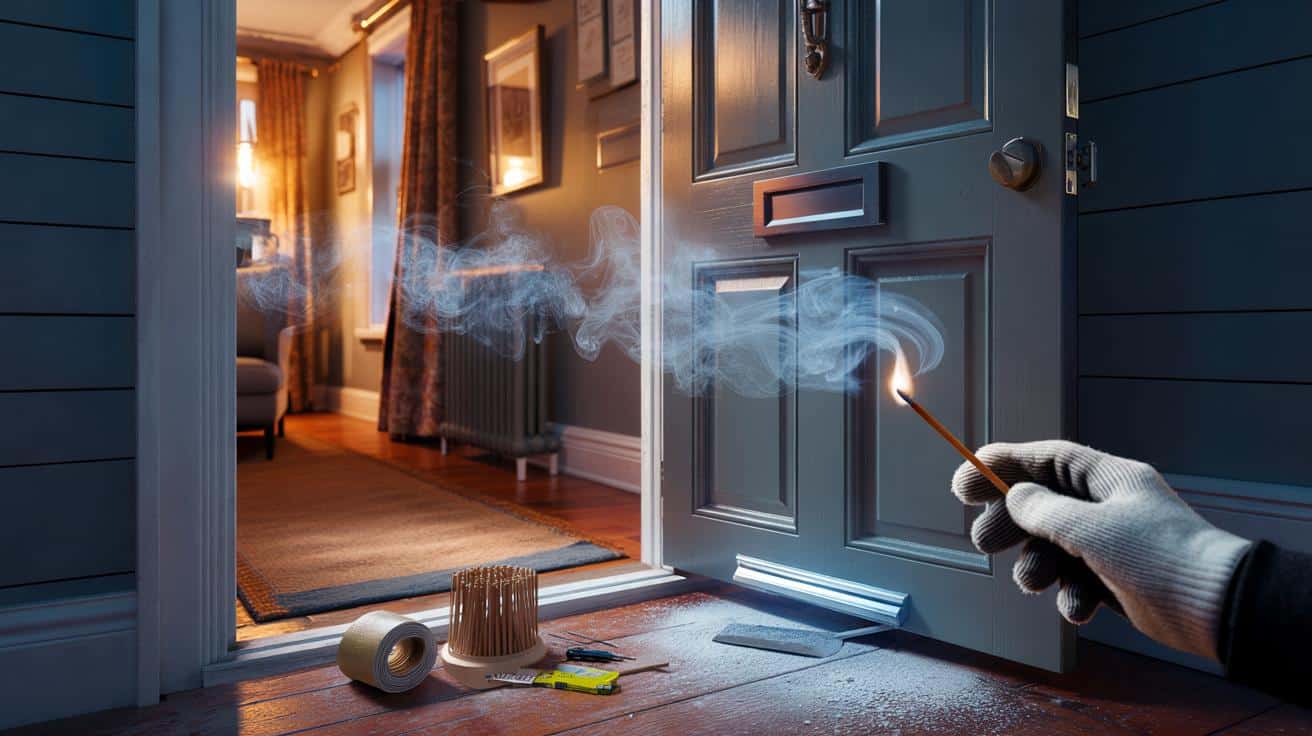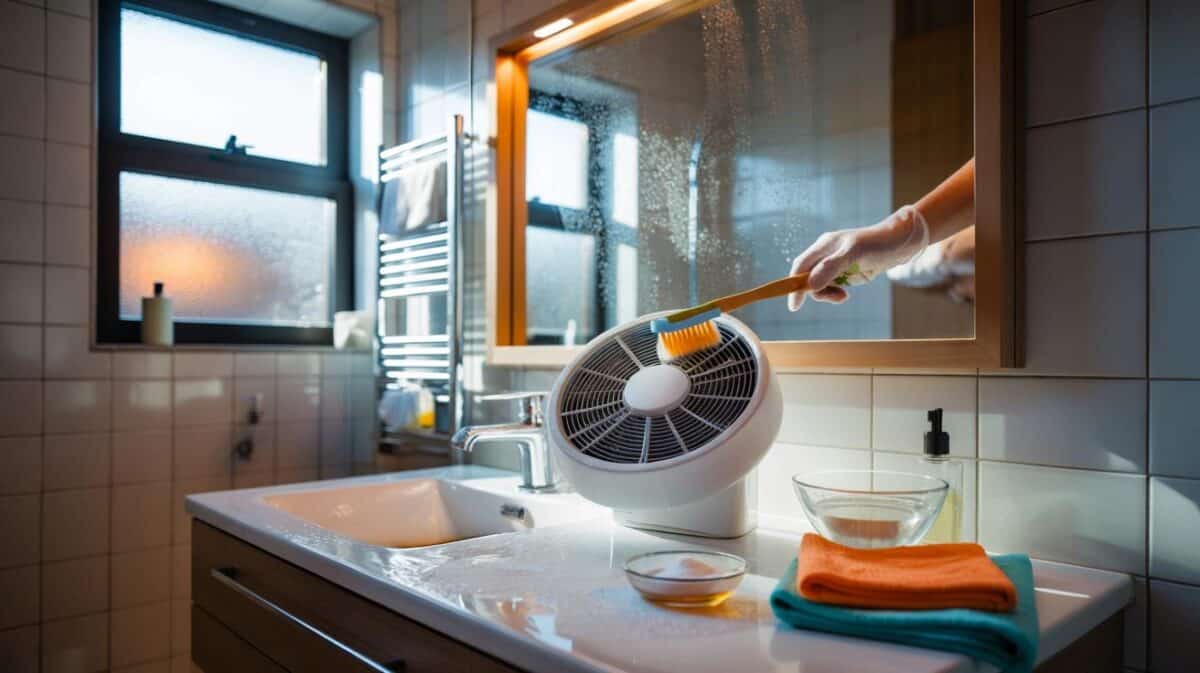Across the country, households nudge the dial up while a sly chill prowls by the threshold. The culprit often sits in plain sight: a hardworking door with small gaps that act like a flue for paid-for warmth. Seal those leaks and the heating system breathes easier, comfort rises, and your budget stops smouldering.
Why the front door drains heat on cold nights
Wind pressure, stack effect and tiny gaps make a potent trio. When it’s colder outside, warm indoor air presses out at high points and pulls in at low points. The base and sides of a door become the intake. A brush of cold air at your ankles confirms it. So do whistling sounds, rustling post, and a faint waft of outdoors in the hall.
Up to 20% of home heat loss can slip out through doors, letterboxes and unsealed frames when the weather turns.
No rug or radiator setting fixes a leak path. The air must be stopped at the source. That means the threshold, the frame and the accessories need a simple kit of seals that compress, brush or drop to meet the floor.
Quick fixes that pay for themselves
You don’t need a joiner to shut most draughts down. Three upgrades handle nine out of ten leaks: a bottom seal, fresh weatherstripping around the frame, and a heavy curtain behind the door. Each takes minutes, not days.
Bottom seals and brush draught excluders
A basic brush or rubber strip screws to the inside face of the door and sweeps the floor. It blocks the long gap that feeds the strongest current. Drop-down models lift as the door opens and fall closed against the threshold when you shut it, so they don’t snag carpet. Choose a strip long enough to cover the full width, trim to fit, and set the bristles to just kiss the floor.
A £12–£25 brush strip often cuts that needle-like chill immediately and trims heating run-time on the coldest evenings.
Weatherstripping the frame
Tired seals look flattened, cracked or shiny. Press a banknote between the door and the frame, then pull. If it slides out with no resistance, the seal doesn’t compress. Self-adhesive foam or rubber P- and E-profile strips work on most frames. Clean the rebate, measure, cut the corners neatly, and stick with steady pressure. The latch should still click without force.
Curtains, letterboxes and keyholes
A lined curtain on a pole above the door adds a soft barrier that muffles gusts and stops cold air spilling down the corridor. Fit a brush and flap to the letterbox and a simple escutcheon to the keyhole. Small parts, big effect.
Ten-minute audit: hunt the draughts
Pick a breezy evening. Switch off extraction fans, close windows, and walk the door perimeter slowly. Use a strip of tissue or incense to see smoke bend towards leaks. Mark problem spots with low-tack tape.
- Feel for cold at the threshold, hinge side and lock side.
- Check the letterbox, keyhole, spyhole and any cat flap.
- Look for daylight at corners and under the door.
- Tighten hinge screws and lubricate to improve the close.
- Adjust the striker plate so the latch pulls the door snug.
- Clean surfaces before sticking new seals.
What it costs, how long it takes, what you stand to gain
| Fix | Typical cost (GBP) | Time | Likely gain |
|---|---|---|---|
| Brush or rubber bottom seal | £12–£25 | 15–30 min | Warmer hallway; fewer boiler cycles on windy nights |
| Drop-down automatic seal | £25–£50 | 30–45 min | Tight shut without dragging on floors; stronger draught cut |
| Foam or rubber weatherstripping | £8–£20 | 20–40 min | Better latch feel; stops side leaks and rattles |
| Lined thermal curtain | £20–£60 | 20–40 min | Extra insulation layer; calmer entrance on gusty days |
| Letterbox brush and flap | £7–£15 | 10–20 min | Blocks a direct wind tunnel through the door |
| Keyhole escutcheon | £3–£6 | 5–10 min | Removes a tiny but sharp draught near hand height |
For a typical gas-heated home, simple draught-proofing often saves dozens of pounds each year and boosts comfort far beyond its cost.
How much heat can one small gap waste?
Here’s a reality check. Picture a standard door 2.0 m high and 0.9 m wide. A persistent 3 mm gap around the sides and bottom equals roughly 0.015 square metres of open area. That’s similar to drilling a round hole about 14 cm across in an outside wall. On a windy night, that opening funnels cold air in and forces warm air out upstairs. Seal the perimeter and the pressure loop weakens sharply.
Make it stick: installation tips that last
Clean first. Dust and paint chalk kill adhesive. Use isopropyl alcohol and let it dry. Warm the tape with your hands before you peel. On corners, mitre the ends rather than butt-jointing, so the seal doesn’t snag. If the door scrapes after fitting, step down to a slimmer profile rather than over-clamping the latch.
If the door is warped or the threshold is damaged, temporary seals help, yet a proper repair pays back in comfort. A new adjustable threshold or a skilled plane-and-reseal can restore the even contact a seal needs to work.
Renting, listed homes and shared entrances
Tenants can use reversible fixes: self-adhesive strips, screw-on brush seals using existing holes, and a tension rod for curtains. Keep packaging and take the kit with you. In shared entrances, focus on your flat’s internal door and add a curtain to limit stairwell draughts. Listed properties can still accept discreet seals that don’t alter the appearance; check permission if in doubt.
Safety, ventilation and smart balancing
Do not block purpose-provided ventilation. Trickle vents, air bricks and combustion air for stoves or boilers must stay open. Fit and test a carbon monoxide alarm if you burn fuel indoors. Draught-proof the door, then nudge heating controls to match the new reality: lower the thermostat by 1°C if comfort allows, trim start times, and shorten evening burn. That keeps savings real.
Want data before you buy? Try these checks
Run a quick thermal snapshot with a borrowed infrared camera or a low-cost thermal phone attachment on a frosty morning. The threshold and frame corners often glow blue. After you fit seals, repeat the shot to verify the change. You can also log boiler run-time or smart-meter half-hourly use before and after a weekend of improvements to spot the shift.
When bigger work makes sense
If the door has a poor fit, single glazing in side panels or a loose frame, the gains from simple seals plateau. A well-fitted, insulated door slab, tight frame and modern threshold lift performance further. Before replacing, measure the area and calculate the current leakage estimate using the gap example above. If the door sits in a windy exposure, add a porch canopy or windbreak planting to soften gusts and reduce pressure on the seal line.








